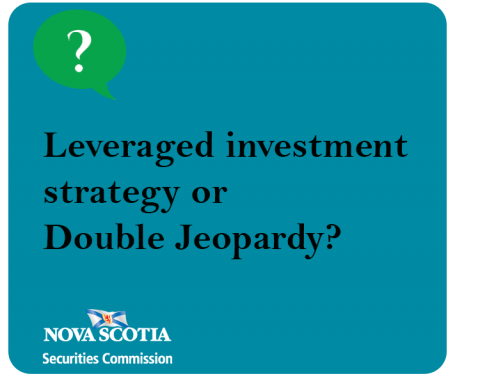Submitted by nsscadmin on

Okay, we are not talking about the TV show or Alex Trebek.
It's a new year, and many investors may be re-examing their investments and investment strategy and goals. With that may also come the temptation or offers to take out loans with which to invest and employ what is known as a leveraged investment strategy. This is a highly risky strategy for investors and not one to be entered into without an investor doing their due diligence and fully understanding the risks involved.
Here’s how a leveraging strategy works. An investor takes out a substantial loan which may be in the tens or even hundreds in thousands of dollars. The money is used to purchase an investment that may return distribution payments to the investor. The investor then relies on these distribution payments to repay the loan and hopefully also to have more money leftover to use as an additional source of income.
Here’s where the risk comes in. There is no way this revenue can be guaranteed to meet the investors needs to pay the loan. If the investment goes through a downturn or tanks altogether the investor is still on the hook for the loan payments. As an example, an investor could be on the hook for annual loan payments of $5,000, but the investment distributions are only returning $300 per month or $3,600 per year. That’s a shortfall of $1,400 that the investor must make up. If the investments decrease in value, they may not cover any principal loan amounts still outstanding. In effect, the investor has entered the Double Jeopardy round where they have lost their investment and still has to repay the loan.
The Nova Scotia Securities Commission always cautions investors regarding borrowing money to invest. It’s true that borrowing money to invest can work out for investors, more so if they are not reliant on the investment to pay for the loan costs. That $10,000 you borrowed to invest is now only worth $8,000 on the markets. The leveraged investment now costs you $12,000 (the original $10,000 loan plus the $2,000 loss on investments) plus interest. For this example, your investment would need to have a return of 25% just to get back to even. Hopefully you have enough time to wait for your investment to potentially rebound and get back in the red.
The last word on borrowing to invest:
- Know if you’re leveraging your investment and how it works.
- Know your risk tolerance, if you can’t handle the markets ups and downs, this may not be for you.
- Know the time horizon of your investment.
- Know how much you’re actually paying for the loan and investment and determine if it really has the potential to make money.
- DO NOT borrow money to invest that you can’t afford to pay back.
